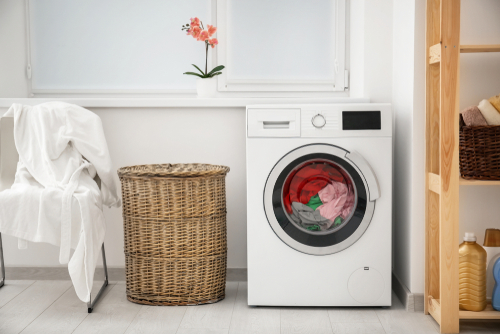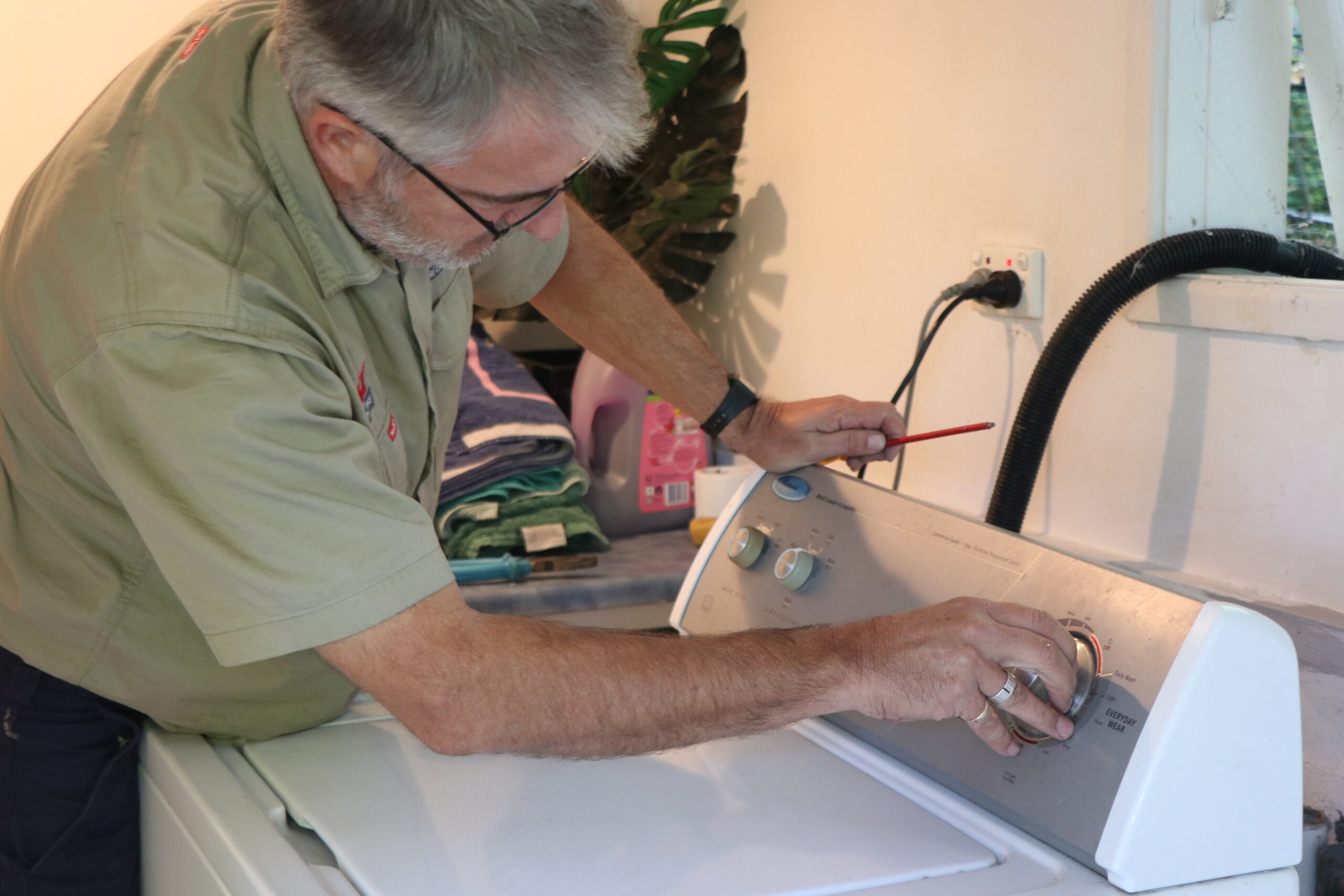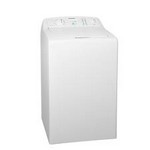How to clean your washing machine
Considering the fact that a washing machine is used to clean clothes, it may seem a little on the odd side that you need to consider cleaning your washing machine … but you definitely do! The environment created in washing machines can mean the perfect habitat for lots of nasties, including salmonella. Therefore, it is very important to ensure your machine stays free of mould and soap scum for the cleanest clothes possible.
There are heaps of benefits for cleaning your washing machine every 6 months, including:
- Stopping the machine hoses from getting blocked with scum
- Preventing the door seal from a build-up of mould and mildew
- Ensuring your clothes don’t come out of your machine with a musty smell
- Ensuring your soap dispenser doesn’t block up
Front Loading Washing Machine Cleaning Guide

- Ensure your machine is turned off at the wall.
- Unfasten the lint filter from the machine and remove any lint, then clean the filter with warm soapy water and replace it.
- Remove the detergent drawer and, in order to remove any build-up, wash with warm soapy water. This ensures the detergent and other liquids can be released evenly and effectively in a cycle. Once washed, place back into the machine.
- To check for blockages, remove the drainage hose. If there is any obstruction, remove and then replace the hose, ensuring it is attached properly to the machine.
- The door seal also needs cleaning by wiping with bleach or an anti-mould solution. Once you’ve done this, ensure you rinse the door seal well.
- The rest of the machine also needs cleaning, so wipe down the display panel, door and any other latches or knobs that your machine may have with warm soapy water – this includes all external surfaces!
- Once you have put the machine back together and wiped it over, turn it back on at the power switch.
- The first cycle you run once turning your machine back on is a bit of a strange one – fill the detergent dispenser with bicarbonate soda (½ a cup) and use vinegar to fill the fabric softener dispenser.
- Once you have put the bicarb and vinegar in the dispensers, place your machine on its longest (and hottest) cycle. This cycle must be empty!
- Once that cycle has finished, open the door and wipe over the inside of the drum, as some dirt or grime may have been moved around in the cycle.
- To finish, run your machine through a cold cycle to complete the process.
After you have completed the above steps, your washing machine should run like it is brand new!
If you have completed the above steps and your front-loading washing machine just isn’t working correctly, give us a call and we will arrange for one of our appliance repair technicians to attend to your home and see what the issue is.
For all your professional appliance repair and installs, contact the qualified experts.
We can be there today!
Book now
Top Loading Washing Machine Cleaning Guide

- Ensure your washing machine is turned off at the wall.
- Remove the lint filter, remove any lint and then clean the filter with warm soapy water, then re-attach.
- To remove build-up, remove the fabric softener dispenser and clean in warm soapy water then replace.
- Then remove the drainage hose and check for blockages. If there is anything lodged in the hose, remove and then return the hose to the washing machine, ensuring it is securely attached.
- Then clean the machine by wiping the lid, display panel, knobs, latches and external surfaces with warm soapy water.
- Turn the washing machine back on once reassembled.
- Fill your washing machine through its hottest wash at the highest water level and, whilst filling, add 1 cup of vinegar and 1/2 cup of baking soda.
- Allow your machine to agitate for a few minutes.
- Turn your machine off or pause the cycle.
- Allow the water/vinegar/baking soda mix to sit in your machine for approximately 1 hour.
- Then restart your machine allowing the cycle to complete.
- Once the cycle has finished, wipe the drum to remove any dislodged particles.
- Finally, run the machine through a cold cycle to rinse completely.
If the above steps just don’t seem to be helping your washing machine to run any better, give us a call and we can get one of our appliance repair technicians to pop over and take a look at your top loading washing machine today.
Washing Tips
If your clothes aren’t smelling as fresh as you’d hoped, soak them in a bucket with ½ a cup of baking soda and your clothes will be perfectly smelling before you know it!
If you are finding that fabric softener isn’t doing its job as you’d hoped, or you’re finding that fabric softener is causing allergies or sensitivities, give vinegar a go. It is the perfect and inexpensive alternative and doesn’t leave residue on your clothes.
Thinking a DIY laundry detergent may be a better option for your home? Combine a nontoxic soap or detergent and add ½ cup of borax – this boosts its cleaning power, as well as has antiseptic, water-softening, whitening and antibacterial properties.
When washing your clothes, many people don’t realise the importance of the washer cycle you use. A regular cycle is more suited for dirty or strong clothes, whereas a permanent press-style wash is better for an average load. If your clothes are loosely woven or fine, the delicate cycle should be your first choice. Don’t forget, use cold water on bright coloured loads and hot water for white loads, then warm water for your average load of washing!
If you have any issues with your washing machine or want to know more about what our appliance technicians can offer you, give us a call on 1300 762 260 or complete an online form today.








